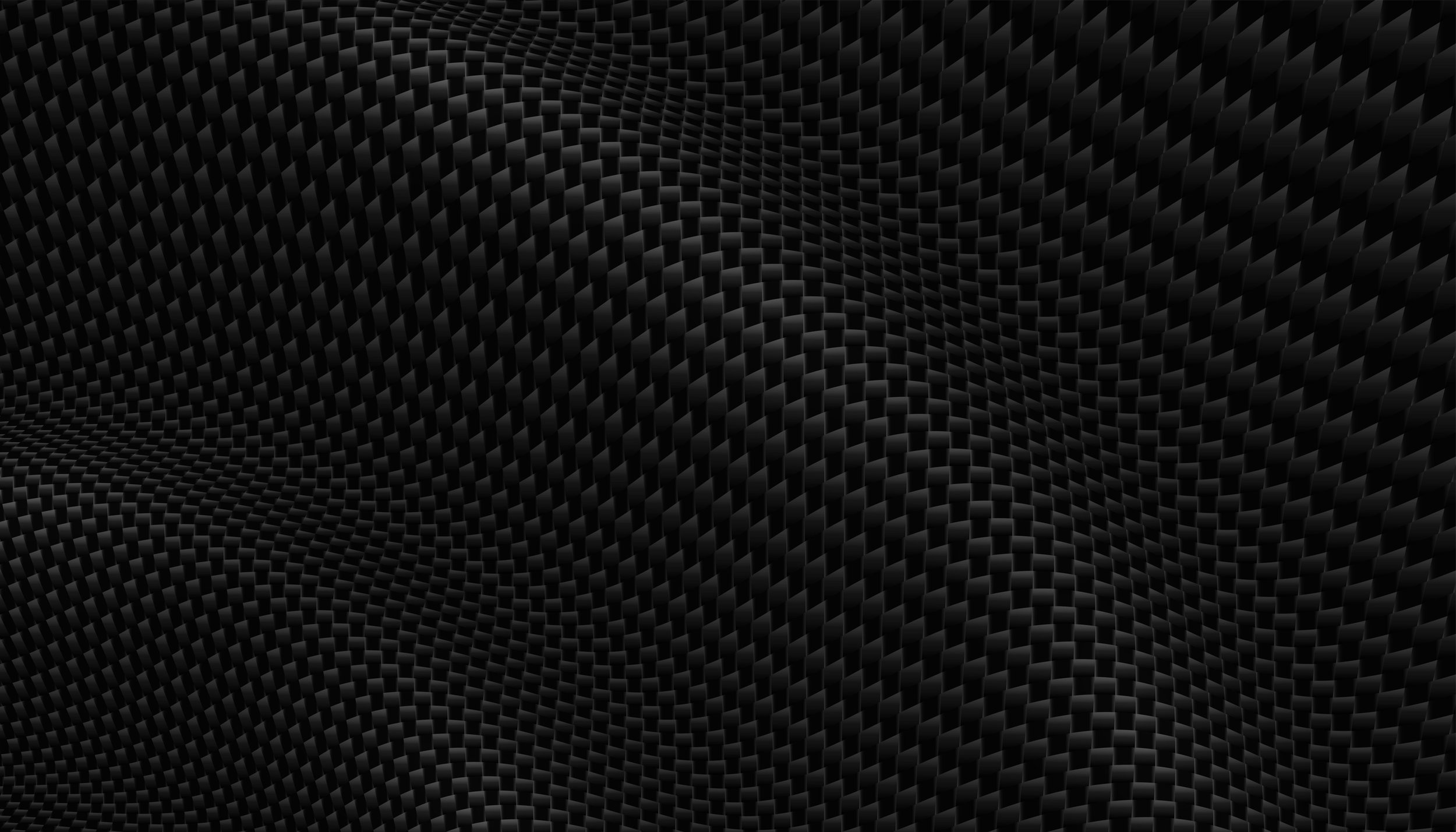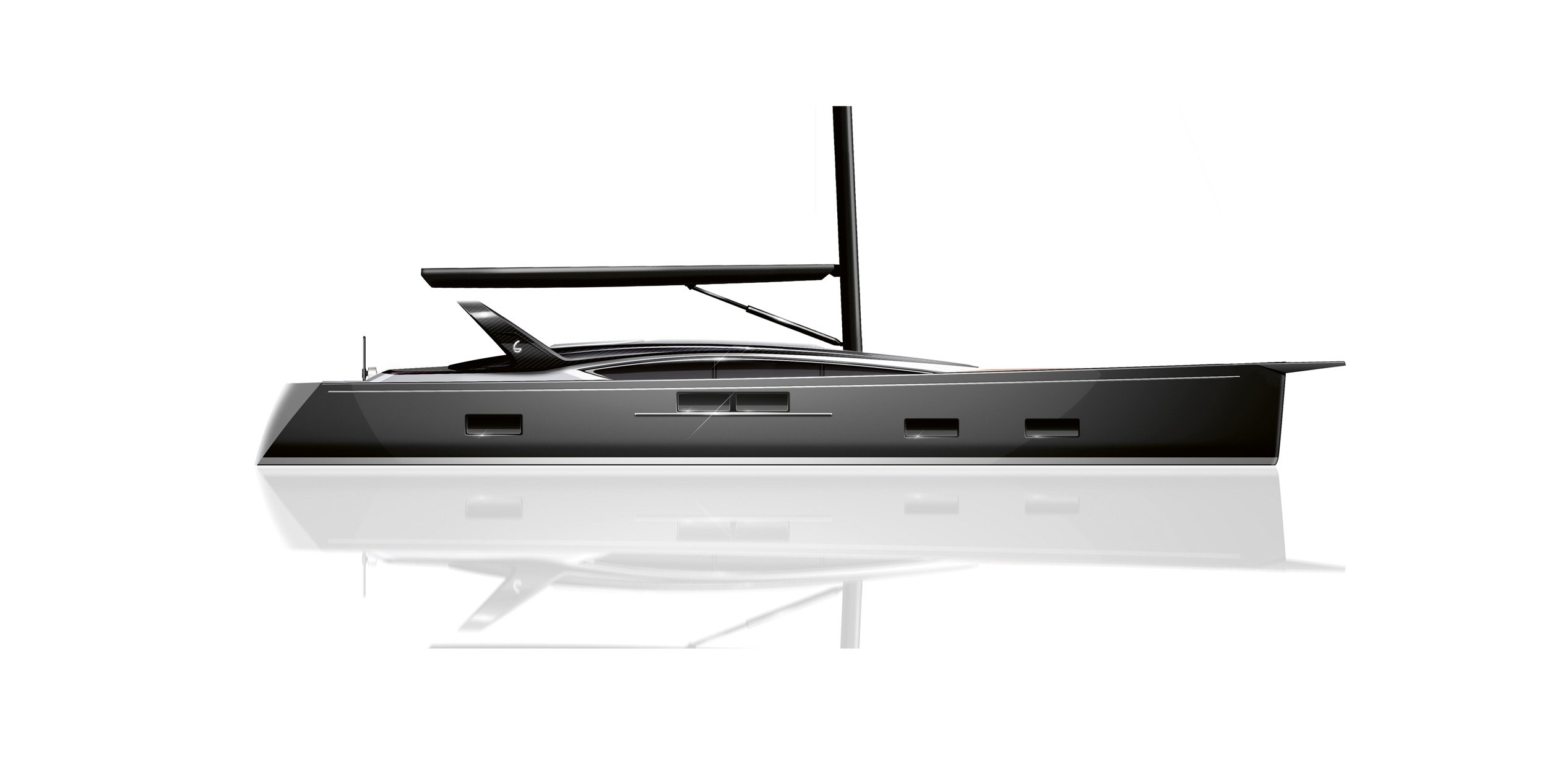featured project No. 002
Shipman Carbon Yachts Range
Navigating Innovation and Impact in Yachting
A notable addition to J&J Design's portfolio, the Shipman line represents a significant step forward for sailboat design. This is about more than simply boats; it's about a concept that questioned the status quo by fusing cutting-edge technological innovations with sensible maritime requirements. This account explores the origins of the Shipman line, the innovations in technology it brought about, and its real influence on the yachting industry. J&J Design, led by the Jakopin brothers, set out to transform yacht design from the bottom up in addition to building a new vessel.

Shipman 80
Introduction
The story of the Shipman line is a testament to innovation, collaboration, and a relentless pursuit of excellence in yacht design and construction. Originating from a shared vision between J&J Design and several marine industry luminaries, the Shipman Carbon Yachts emerged as a pioneering project that redefined performance, design, and sustainability in sailing yachts. This case study explores the development of the Shipman line, focusing on the collaborative efforts, technical challenges, and groundbreaking achievements that have defined its legacy.
Imagine this scene: In a bustling Ljubljana bar, a pivotal meeting took place that would redefine yacht design. This wasn't just any gathering; it was a fusion of minds poised to challenge the future of sailing.
Among them were Japec and Jernej Jakopin, the visionary founders of J&J Design, ready to bring their dream of a groundbreaking yacht line to life. Their passion for innovation and dedication to excellence set the stage for this transformative discussion.
Doug Peterson, renowned for his revolutionary yacht designs and racing victories, brought his deep understanding of naval architecture to the table. His expertise would guide the conceptualization of yachts that combined performance with elegance.
Bill Green, a pioneer in utilizing carbon for racing sailboats, shared his insights on creating vessels that were not only fast but also resilient. His experience with carbon composites promised to push the boundaries of traditional boatbuilding.
Giovanni Belgrano, with his expertise in carbon composite structures, offered the technical know-how essential for turning ambitious ideas into feasible designs. His engineering skills were key to ensuring that these innovative concepts could actually take to the seas.
Together, the Jakopin brothers, Peterson, Green, and Belgrano engaged in a lively debate, dreaming up a future where sailing yachts were not just vessels but embodiments of advanced technology and design. This meeting was more than a brainstorm; it was the catalyst for the Shipman line, representing a leap in yacht design through the integration of cutting-edge materials and engineering.
Their collective vision that night in Ljubljana didn't just aim to create a new yacht; it sought to revolutionize the industry, blending the founders' ambitions with the practical and technical expertise of their distinguished guests. This was the moment that set the Shipman project in motion—a testament to the power of collaboration and innovation.
Shipman 50
Guillaume Verdier, Michel Desjoyeaux and Japec Jakopin working on the Shipman 63
Shipman 80 layout
Greenline 33
The Journey from Dream to Reality
What happened in Ljubljana was more than simply chatter. It sparked a collaboration that would push the boundaries of sailboat design. Bill Green's decision to bring a team to Slovenia, Belgrano's availability of ground-breaking materials, and Peterson's architectural expertise transformed the Shipman concept into a project with enormous promise. This was a convergence of innovation, when technology and tradition met on the drawing table.
The Shipman line was the epitome of ingenuity. J&J Design did more than just design a yacht; they completely rethought the process. They used 3D technology, computer-aided manufacturing, and new materials to improve precision and expedite production. The Shipman 50 Carbon was a shining example of this new approach, providing unrivalled performance, handling, and comfort while redefining what sailors could expect from a yacht.
Development Process
The development of the Shipman line was characterized by a highly collaborative approach, involving extensive research, innovation, and testing. The project benefitted from the collective expertise of its team members, leading to several key milestones:
Materials Innovation: The adoption of SPRINT carbon/epoxy materials, which allowed for a production-efficient and precise build process.
Naval Architecture: Collaborations with renowned naval architects and engineers to optimize the yacht's design for performance and comfort.
Prototyping and Testing: Construction of prototypes for real-world testing, enabling the team to refine the yacht's design based on empirical data.
Design Philosophy: Emphasis on performance, short-handed sailing capability, and a pilothouse deck configuration, setting the Shipman yachts apart from their contemporaries.
Shipman 63
Methodology
The Shipman's design and construction methodology, emblematic of J&J Design's approach, is deeply rooted in a holistic philosophy that integrates advanced naval architecture, materials science, and sustainable engineering principles. This multifaceted strategy underpins the project's success, emphasizing innovation, efficiency, and environmental stewardship.
Extensive research on carbon fiber technology
J&J Design dedicated significant effort to researching carbon fiber technology, particularly its applications in marine environments. Carbon fiber's high strength-to-weight ratio and corrosion resistance make it ideal for creating lightweight, durable hulls that enhance performance and fuel efficiency. By leveraging this material, J&J Design not only improved the Shipman's speed and agility but also its sustainability profile, as lighter boats exert less strain on propulsion systems, reducing fuel consumption and emissions.
Collaborative design processes
The Shipman project benefited from a collaborative design process that brought together engineers, designers, and sustainability experts. This interdisciplinary team worked in unison to ensure that every aspect of the yacht, from hull shape to interior design, was optimized for performance, comfort, and minimal environmental impact. The collaborative approach facilitated the exchange of ideas and the integration of innovative solutions, such as hybrid propulsion systems, which combine traditional and electric power sources for enhanced efficiency and reduced emissions.
Prototype testing for hull designs and hybrid propulsion systems
Prototype testing was a critical component of the Shipman's development. J&J Design conducted extensive tests on hull designs and hybrid propulsion systems to evaluate their performance in real-world conditions. This iterative process allowed the team to refine the yacht's design, ensuring optimal hydrodynamics, stability, and efficiency.
Iterative design improvements
The methodology emphasized iterative design improvements, guided by performance data and user feedback. This process ensured that the Shipman not only met but exceeded the expectations of modern sailors looking for high performance without compromising on sustainability. By continuously refining the design, J&J Design was able to enhance the yacht's functionality, aesthetics, and performance, setting a new standard for luxury sailing yachts.

Shipman 50
Extensive research on carbon fiber technology
J&J Design dedicated significant effort to researching carbon fiber technology, particularly its applications in marine environments. Carbon fiber's high strength-to-weight ratio and corrosion resistance make it ideal for creating lightweight, durable hulls that enhance performance and fuel efficiency. By leveraging this material, J&J Design not only improved the Shipman 63's speed and agility but also its sustainability profile, as lighter boats exert less strain on propulsion systems, reducing fuel consumption and emissions.

Maximizing Interior Space and Luxury
Despite the focus on performance and sustainability, J&J Design ensured that luxury remained at the forefront of their yachts' appeal. The intelligent use of space, facilitated by the structural advantages of carbon fiber, allowed for expansive interior areas that defied the external dimensions of the vessels. This approach ensured that the onboard experience did not compromise on comfort, with spacious living quarters, state-of-the-art amenities, and bespoke finishes catering to the most discerning clientele.
Shipman 80
Shipman 63
Making Waves in the Yachting World
When the Shipman 50 Carbon first appeared on the scene in 2003, it didn't simply compete; it won. This was more than just a new vessel; it was a declaration that sailing yachts could be just as exciting as they were opulent. With its unique combination of speed, handling ease, and design innovation, the Shipman series shattered conventions and challenged preconceived ideas. It was about encouraging a move towards more technologically advanced, performance-focused cruising yachts, not merely about building faster boats.

Shipman 63
Beyond Boats: A Legacy of Innovation
The Shipman line is more than just a chapter in J&J Design's history; it is a story about daring to dream and relentlessly pursuing that desire. It depicts a path of creativity, teamwork, and a firm conviction that the future of yachting can be different—and better.
Shipman 63
Shipman 63 interior
Results and Impact
The Shipman series stands as a testament to J&J Design's innovative approach in the maritime industry, particularly in integrating green technologies within luxury yachting. These vessels have been widely celebrated for their forward-thinking design and commitment to sustainability. By incorporating carbon hulls, which significantly reduce the weight of the yachts, along with hybrid propulsion systems, the Shipman yachts have achieved a remarkable decrease in fuel consumption and emissions. This not only reflects a technological leap but also aligns with the growing environmental consciousness among luxury yacht enthusiasts.
The accolades received by the Shipman series, including the European Boat of the Year, underline its impact and success in setting new benchmarks for eco-friendly luxury sailing. These awards highlight the series' ingenuity in design, performance, and environmental stewardship. By attracting a niche market of eco-conscious sailors, the Shipman series has opened up new avenues for sustainable luxury yachting, setting a precedent for future innovations in the industry.
Moreover, the success of the Shipman series has broader implications for the maritime industry. It demonstrates the viability and demand for sustainable luxury yachts, encouraging other manufacturers to consider greener alternatives in their designs. The series' emphasis on reducing emissions and fuel consumption, without compromising on performance or luxury, offers a compelling blueprint for the future of yachting, promoting a shift towards more responsible and sustainable maritime practices.
Shipman 80
Lessons Learned
The Shipman project has indeed served as a profound learning experience, emphasizing the critical importance of sustainability, teamwork, and innovation in yacht design and the broader sphere of luxury product development.
The Power of Teamwork: The Shipman series underscores the value of collaboration across various disciplines. The collective expertise of professionals in naval architecture, materials science, and luxury design was instrumental in overcoming complex challenges. This synergy enabled the creation of yachts that set new standards in luxury, performance, and sustainability, demonstrating that cross-disciplinary teamwork is vital for innovation.
Embracing Innovation: The project also reinforced the necessity of continuous innovation in a rapidly evolving technological landscape. The Shipman's design philosophy, characterized by adaptability and a willingness to explore new avenues, exemplifies the need for an ongoing commitment to innovation. It's a reminder that progress in design and technology requires a proactive and open-minded approach.
These insights from the Shipman project resonate beyond yacht design, offering guidance for all sectors aiming to integrate luxury with sustainability. They advocate for a future where innovation, collaboration, and environmental consciousness are integral to creating luxurious, yet responsible, products.

Shipman 57
Shipman Models
Shipman 50 Carbon (Design No. 124 / 2001)
Highlight: The first in-house project for the new boatbuilding division, aiming to bring high-tech carbon/epoxy racing yacht performance into the cruising world.
Design Team: Included Giovanni Belgrano, Bill Green, Doug Peterson, and Jørgen Bonde.
Innovation: Utilized 3D design, milled plugs, and molds with dimensionally stable epoxy/carbon composites for efficient, cost-effective construction leading to a light and strong boat.
Achievements: Launched in 2003, the Shipman 50 Carbon was acclaimed for its fast sailing, ease of handling by two sailors, and comfort. It won the European Yacht of the Year 2003 and set the foundation for a successful cruising carbon sailing yacht range.
Shipman 63 (Design No. 155 / 2003)
Highlight: Designed with feedback from the Shipman 50, incorporating insights from the French single-handed sailing school.
Collaborators: Michel Desjoyeaux, Guillaume Verdier, and Giorgio Provinciali contributed to the deck, rig design, structure, and naval architecture.
Features: A cruising yacht that sailed exceptionally well, capable of ocean crossings with short or single-handed crews, and offered unparalleled comfort and convenience.
Awards: Won Croatian, Slovenian, and European Boat of the Year 2006 titles, becoming the world’s most popular carbon yacht.
Shipman 72 (2006)
Highlight: Continuing the legacy of performance and luxury, the Shipman 72 enhanced the series with a larger and more luxurious option, maintaining the brand's signature sailing performance.
Design Evolution: While specific details are not provided in the available documents, it can be inferred that the Shipman 72 built upon the technological and design advancements of its predecessors, offering increased space and comfort without compromising on performance.
Shipman 80 (Design No. 197 / 2006)
Highlight: The pinnacle of the Shipman range, offering unprecedented size and luxury within the series. It catered to clients seeking the ultimate in performance cruising.
Performance and Luxury: The Shipman 80 combined expansive living spaces with superior sailing performance, showcasing J&J Design's ability to blend luxury with high-end performance seamlessly.
Shipman 59 (Design No. 247 / 2012)
Highlight: Represented a new phase in the Shipman design ethos with a more audacious exterior, mainsheet arch, and a protected cockpit layout.
Design Risk: Marked a bold departure in design for the traditionally conservative sailing markets, which was well received and highlighted the industry's readiness for innovation.
Achievements: The Shipman 59 was awarded the Boat of the Year 2015 in Slovenia, underscoring the successful integration of performance and modern design aesthetics.
Shipman Project Timeline
2018 Shipman 78 / Preliminary Design
2012 Shipman 59 / With D. Peterson and G. Verdier.
2008 Shipman 130 / Preliminary Design
2008 Shipman 150 / Preliminary Design
2007 Shipman 100 / Preliminary Design
2006 Shipman 80 / Interior design Rhoades/Young
2006 Shipman 72 / Seaway
2003 Shipman 63 / Seaway
2001 Shipman 50 / Shipman

Shipman 80
Awards of the Shipman Line
The Shipman series has received numerous accolades, reflecting its impact and innovation in sustainable boating:
Shipman 50
European Boat of the Year 2004
Boat of the Year 2004, Slovenia
Shipman 63
European Boat of the Year 2006
Boat of the Year 2006, Croatia
Boat of the Year 2006, Slovenia
Shipman 59
Boat of the Year 2015, Slovenia










